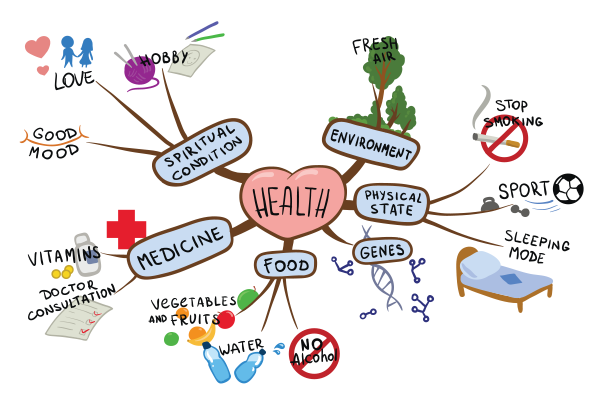
A heart event – whether it is a heart attack, heart surgery, or diagnosis of heart failure – can be a life-altering experience. Recovery is not simply about healing physically but also about regaining strength, confidence, and quality of life. This is where cardiac rehabilitation plays a crucial role.
Cardiac rehabilitation is a medically supervised programme designed to improve cardiovascular health after a heart event. It combines exercise training, education about heart-healthy living, and counselling to reduce stress and anxiety. Yet, despite its proven benefits, many patients either delay or skip cardiac rehabilitation altogether.
In this blog, we explore why cardiac rehabilitation is so important and how it can make a real difference to heart health and overall well-being.
Synopsis
- What Is Cardiac Rehabilitation?
- Benefits of Cardiac Rehabilitation: At a Glance
- The Life-Saving Benefits of Cardiac Rehabilitation
- Who Should Attend Cardiac Rehabilitation?
- What Happens During Cardiac Rehabilitation?
- Common Myths About Cardiac Rehabilitation
- Conclusion: Your Heart Deserves the Best Care
What Is Cardiac Rehabilitation?
Cardiac rehabilitation (often called cardiac rehab) is a structured programme tailored to each individual’s needs. It typically involves:
-
Supervised exercise sessions to improve fitness levels safely.
-
Education about heart-healthy nutrition, exercise, medication adherence, and lifestyle changes.
-
Psychological support to help cope with the emotional impact of a heart event.
-
Risk factor management, including blood pressure, cholesterol, diabetes, and weight control.
A full cardiac rehabilitation programme usually starts during the hospital stay or soon after discharge and continues for several weeks or months, depending on the patient's needs.
Benefits of Cardiac Rehabilitation: At a Glance
Here is a quick overview of how cardiac rehabilitation helps:
|
Benefit |
Description |
|
Reduces Risk |
Lowers the risk of future heart events and death |
|
Boosts Strength |
Improves stamina, strength, and physical function |
|
Supports Mental Health |
Reduces anxiety, depression, and stress |
|
Encourages Healthy Living |
Promotes long-term heart-healthy habits |
|
Improves Quality of Life |
Enhances emotional well-being and social reintegration |
The Life-Saving Benefits of Cardiac Rehabilitation
1. Reducing the Risk of Future Heart Events
One of the biggest reasons for participating in cardiac rehabilitation is to lower the risk of another heart event. Studies have shown that people who complete a cardiac rehab programme have up to 25% lower risk of death from heart disease compared to those who do not.
Rehabilitation teaches patients how to exercise safely, eat better, manage stress, and stick to their medication regimens – all of which are essential for preventing another incident.
2. Improving Physical Strength and Stamina
After a heart event, many individuals feel weak, fatigued, or fearful of physical activity. Cardiac rehab helps patients rebuild their strength and confidence through carefully monitored exercise plans.
Exercise is introduced gradually, under professional supervision, ensuring that it is safe and effective. Over time, patients notice improved stamina, reduced breathlessness, and greater ease in performing everyday activities like walking, climbing stairs, and carrying groceries.
3. Supporting Mental and Emotional Health
Heart events can have a significant emotional impact. It is common for patients to experience anxiety, depression, anger, or feelings of helplessness.
Cardiac rehabilitation addresses these psychological challenges. Support groups, one-to-one counselling, and stress management techniques such as mindfulness and relaxation exercises help patients work through their emotions. By fostering emotional resilience, cardiac rehab improves both mental health and overall recovery.
4. Encouraging Heart-Healthy Habits
Lifestyle changes are essential after a heart event. Cardiac rehab provides the education and tools needed to make lasting changes, including:
-
Eating a balanced, heart-healthy diet
-
Quitting smoking
-
Maintaining a healthy weight
-
Managing blood pressure, cholesterol, and blood sugar levels
-
Learning relaxation and coping techniques to manage stress
Through cardiac rehabilitation, patients can build sustainable habits that support long-term heart health.

5. Enhancing Quality of Life
Beyond the physical and medical aspects, cardiac rehabilitation significantly improves overall quality of life. Patients report feeling stronger, more energetic, and more optimistic about their future. They can return to work, hobbies, and social activities with greater confidence, helping to restore a sense of normalcy and purpose.
Who Should Attend Cardiac Rehabilitation?
Cardiac rehabilitation is recommended for a wide range of patients, including those who have:
-
Experienced a heart attack (myocardial infarction)
-
Undergone coronary artery bypass surgery
-
Had a heart valve repair or replacement
-
Had a heart or lung transplant
-
Diagnosed with stable angina or heart failure
-
Received a stent or other coronary intervention
The programme is tailored to the individual's medical history, condition, and personal goals. Importantly, age is not a barrier – cardiac rehab can benefit younger and older patients alike.
What Happens During Cardiac Rehabilitation?
Cardiac rehabilitation typically occurs in four phases:
Phase 1: Hospital Phase
Begins during the hospital stay. Focuses on basic education, early mobilisation, and planning for discharge.
Phase 2: Early Outpatient Phase
Takes place shortly after discharge. Patients attend supervised exercise sessions two to three times per week alongside educational workshops.
Phase 3: Maintenance Phase
Patients continue exercising independently but remain in close contact with the cardiac rehab team for guidance and support.
Phase 4: Long-Term Maintenance
Patients are encouraged to maintain a heart-healthy lifestyle with regular exercise and periodic check-ins with healthcare providers.
Each stage aims to build on the previous one, helping patients progress confidently towards better heart health.
Common Myths About Cardiac Rehabilitation
Unfortunately, several myths deter people from attending cardiac rehab:
-
“I’m too old.” Cardiac rehabilitation benefits patients of all ages.
-
“I feel fine now, so I do not need it.” Even if you feel well, cardiac rehab reduces the chance of another event.
-
“It’s only about exercise.” It’s a comprehensive programme covering exercise, education, counselling, and support.
-
“It’s too late for me.” It’s never too late to start improving heart health.
Addressing these misconceptions is vital to encourage greater participation in cardiac rehabilitation programmes.
Conclusion: Your Heart Deserves the Best Care
Recovering from a heart event is not simply about surviving – it’s about thriving. Cardiac rehabilitation offers the knowledge, tools, and support needed to take control of heart health and live a full, active life.
If you or a loved one has experienced a heart event, speak to your doctor about joining a cardiac rehabilitation programme. Investing time in recovery today can make all the difference for a healthier, brighter tomorrow.
At Manipal Hospitals Ghaziabad, our expert cardiology team provides comprehensive cardiac rehabilitation programmes designed to guide you every step of the way. From personalised exercise plans to emotional support and lifestyle coaching, we are here to help you achieve a stronger, healthier future.
Book an appointment today and take the first step towards your heart’s complete recovery!
FAQ's
No. Cardiac rehabilitation benefits anyone recovering from various heart events, including heart surgeries, valve replacements, stent placements, and heart failure.
Most programmes last around 6 to 12 weeks, but the exact duration can vary depending on individual needs and progress.
Absolutely. Cardiac rehab programmes are tailored for all ages and can help older adults regain strength, confidence, and independence.
Many hospitals, including Manipal Hospitals Ghaziabad, offer flexible options such as virtual consultations, tele-rehabilitation, and home-based exercise plans.
In many cases, yes. Cardiac rehabilitation is often covered by insurance providers. It is best to check with your healthcare provider or hospital billing department for details.





















 6 Min Read
6 Min Read















